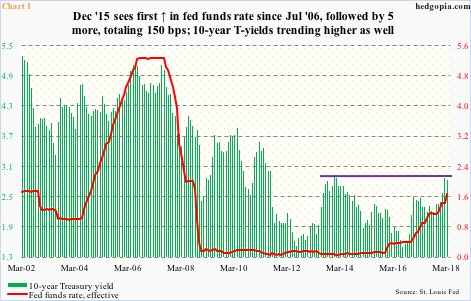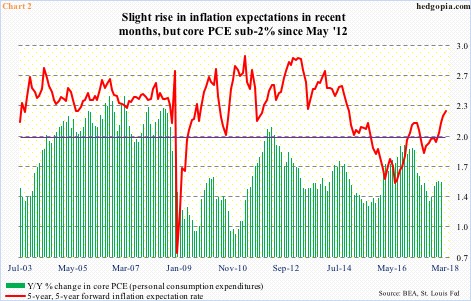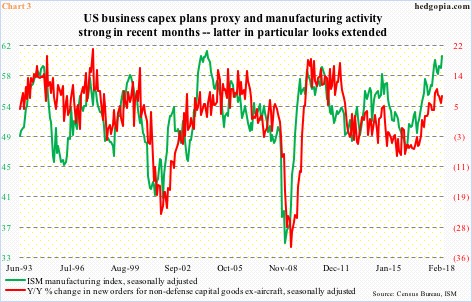by Diane Freeman
Every other week we've been asking a selection of our contributors for their opinion on what we believe are some of the most pressing market-focused questions of the week. This time we wondered:
After Wednesday's Federal Reserve statement do you think new Fed Chair Jerome Powell is more hawkish or more dovish than Janet Yellen? And how will this affect your trading going forward?
- Hawkish or Dovish isn't the right question, it's how many more hikes?
- Forget a scenario of three more rate raises this year, that would be too hawkish
- Powell seems to understand that quasi-dovish policy isn't good news for our economy, markets
- The Fed kept inflation expectations stable, so remain bullish for now and buy the dips
Paban Pandey
Does it really matter if Jerome Powell is more or less hawkish or dovish than his immediate predecessor Janet Yellen, or before that Ben Bernanke?
They lived in different times, come from a different background, and, logically, different variables—be it economic, financial, fiscal, or even political—will influence, or should influence their way of thinking, or the decisions they make. Markets understandably are looking for clues.
For now, they are laser-focused on if there will be two or three more hikes this year, which will decide whether or not Powell and team are leaning hawkish.

Viewed this way, in his first meeting as Fed chair, Powell played it safe.
On Wednesday last week, the Fed funds rate went up by 25 basis points to between 1.5 percent and 1.75 percent (Chart 1). Since December 2015, rates have now gone up by 150 basis points from near zero.
The hike last week was a non-issue, as markets expected one. There was also widespread speculation that the FOMC would signal four hikes this year (including last week’s), up from a three-hike forecast from last December. In the end, the dot plot stuck to three.

This, despite the fact that the forecast for 2018 GDP growth went from 2.5 percent to 2.7 percent, and 2019 from 2.1 percent to 2.4 percent. The forecast for core PCE (personal consumption expenditures) this year, however, remained unchanged at 1.9 percent, while 2019 was nudged higher to 2.1 percent from two percent. Inflation is front and center.
Core PCE – the Fed’s favorite measure of consumer inflation – rose 1.52 percent in the 12 months to January. (February’s numbers will be out on the 29th.) Beginning January 2012, the Fed set a target for a two percent inflation rate. The last time core PCE rose at that level was in April 2012 (Chart 2). Of late, inflation expectations, as measured by the five-year, five-year forward inflation expectation rate, have come to life, but nothing alarming.

Not alarming enough – yet – to seriously get the attention of Powell and team. And in all likelihood the status quo remains for the foreseeable future.
Of late, there has been an increase in inflation expectations as growth picked up momentum. Real GDP grew 2.5 percent in 4Q17. This was preceded by growth of 3.2 percent in 3Q17 and 3.1 percent before that. Similarly, the ISM manufacturing index in February rose 1.7 points month-over-month to 60.8. And, February orders for non-defense capital goods ex-aircraft – proxy for business capex plans – jumped eight percent year-over-year to a seasonally adjusted annual rate of $67.8 billion.
Here is the rub. It will be awfully hard to maintain this pace. In manufacturing, the February reading was the highest since May 2004 (Chart 3). A pause – if not an outright reversal – is only natural.

Then we have the issue of leverage.
Post-Great Recession, US corporate debt went from $6.5 trillion in 2Q09 to $8.9 trillion in 4Q17, Federal debt from $11.5 trillion to $20.5 trillion, and household debt from $13.2 trillion to $13.9 trillion. The rather flattish household debt is primarily because of mortgage debt which declined from $10.6 trillion to $10.1 trillion. Consumer credit went from $2.6 trillion to $3.8 trillion.
Leverage has sharply gone up, but it has so far been manageable. That is because rates are low (Chart 1).
In 4Q17, Federal interest payments were $549.5 billion (SAAR). As a percent of debt, this only made up 2.68 percent. Over the years, the red line in Chart 4 has persistently dropped. If this effective rate was 50 basis points higher, the federal government would be paying $100 billion more in interest payments in 4Q17. In and of itself, this should drag down economic growth.
Further, core inflation is sub-two percent (Chart 2). Two more 25-basis-point hikes would bring the fed funds rate between two and 2.25 percent. And this will begin to matter. Particularly considering that by October this year the Fed would be reducing its massive balance sheet by up to $50 billon a month.
Put all this together, we can just about forget a scenario of three more hikes this year. As things stand, markets will consider this a hawkish development. The Fed in all probability would not want to go down this path in the remaining six scheduled meetings this year.
Charles Hugh Smith
There are two ways to interpret the words Hawk and Dove in the context of Fed policy. The mainstream financial media defines Dovish as preferring further monetary easing and Hawkish as preferring further monetary tightening, with interest rates, asset purchases (i.e. buying mortgage-backed securities and Treasuries) and liquidity being the policy levers the Fed can pull.
The other interpretation is that Doves favor distorting markets by incentivizing the purchase of risk assets and the expansion of credit and leverage, both of which distort price discovery of assets and risk. Under the Fed's artificial stimulus, valuations have become stretched by historical standards, and capital has been allocated (many would say mis-allocated) to stock buybacks and speculative bets rather than being invested in higher productivity, which is the bedrock of both corporate profits and widespread prosperity.
In this interpretation, Hawks favor slowly withdrawing the Fed's artificial stimulus because it has damaged both the real-world economy (via incentivizing chasing assets higher rather than seeking to boost productivity) and the financial markets, which no longer have the inputs necessary to accurately assess and price risk.
There is no doubt that Powell is not in thrall to the tacit goal of pushing the stock market higher to generate a "wealth effect," which was one of Bernanke's core policies that Yellen embraced throughout her tenure. The distorting consequences of essentially permanent monetary easing were ignored by Yellen in favor of pushing equity markets higher. The real-world benefits of this policy have diminished, as the "wealth effect" gains have accrued only to the top slice of households that own substantial financial assets.
This Dovish policy has widened wealth and income inequality to the point that our society is fracturing into a New Gilded Age of haves and have-nots. That Powell seems to understand the systemically destructive nature of quasi-permanent Dovish monetary policy is good news for our economy, markets and society.
Dr. Duru
I think Jerome Powell is doing his best to dissuade the market from labeling him a hawk. So, I think he is just as data-driven neutral as Janet Yellen was.
Given the Fed boosted its forecast for the economy, increased rate expectations for 2019 and 2020, and still kept inflation expectations stable, I have to stay bullish over the intermediate term. This stance means stock market dips, like the current one, are still buying opportunities.
